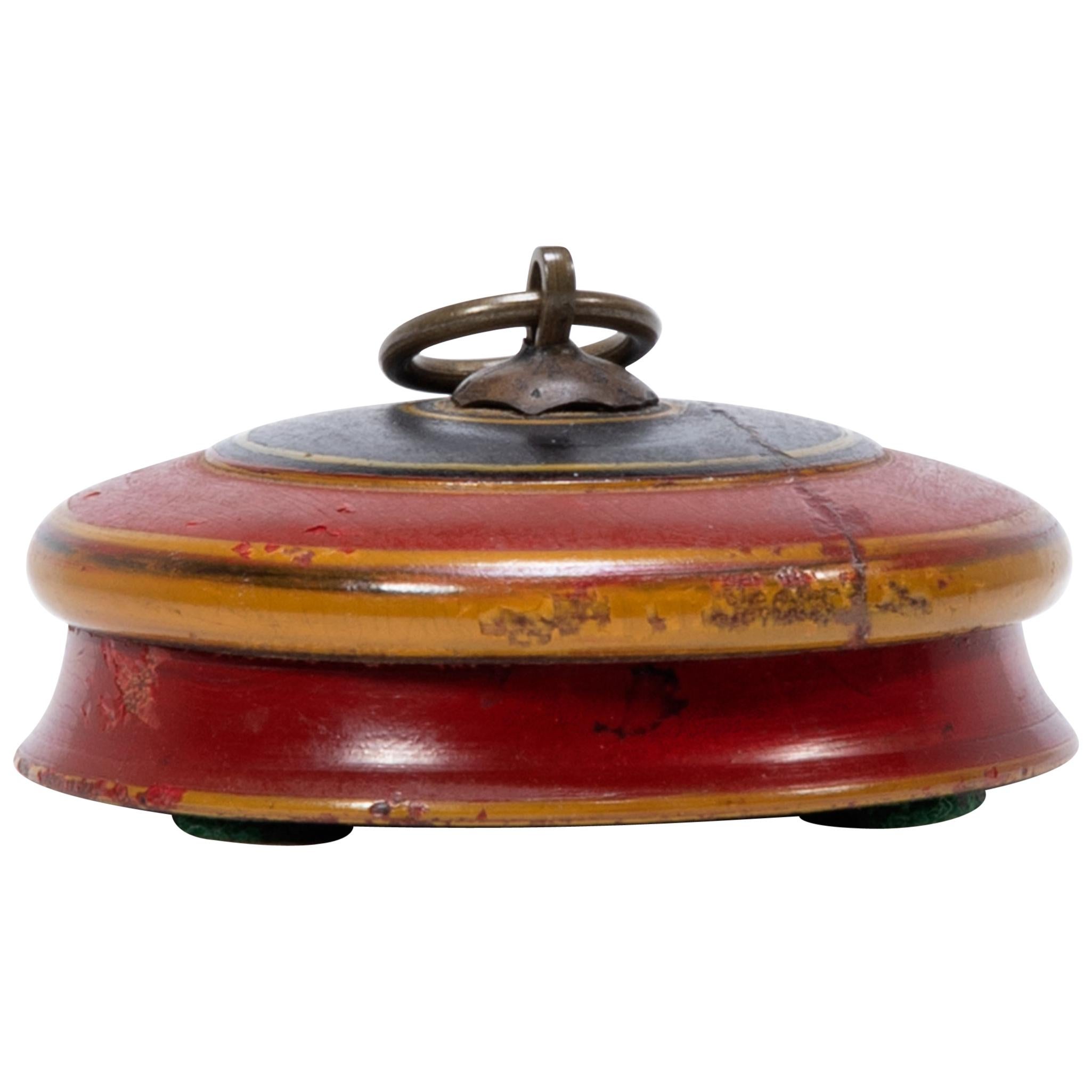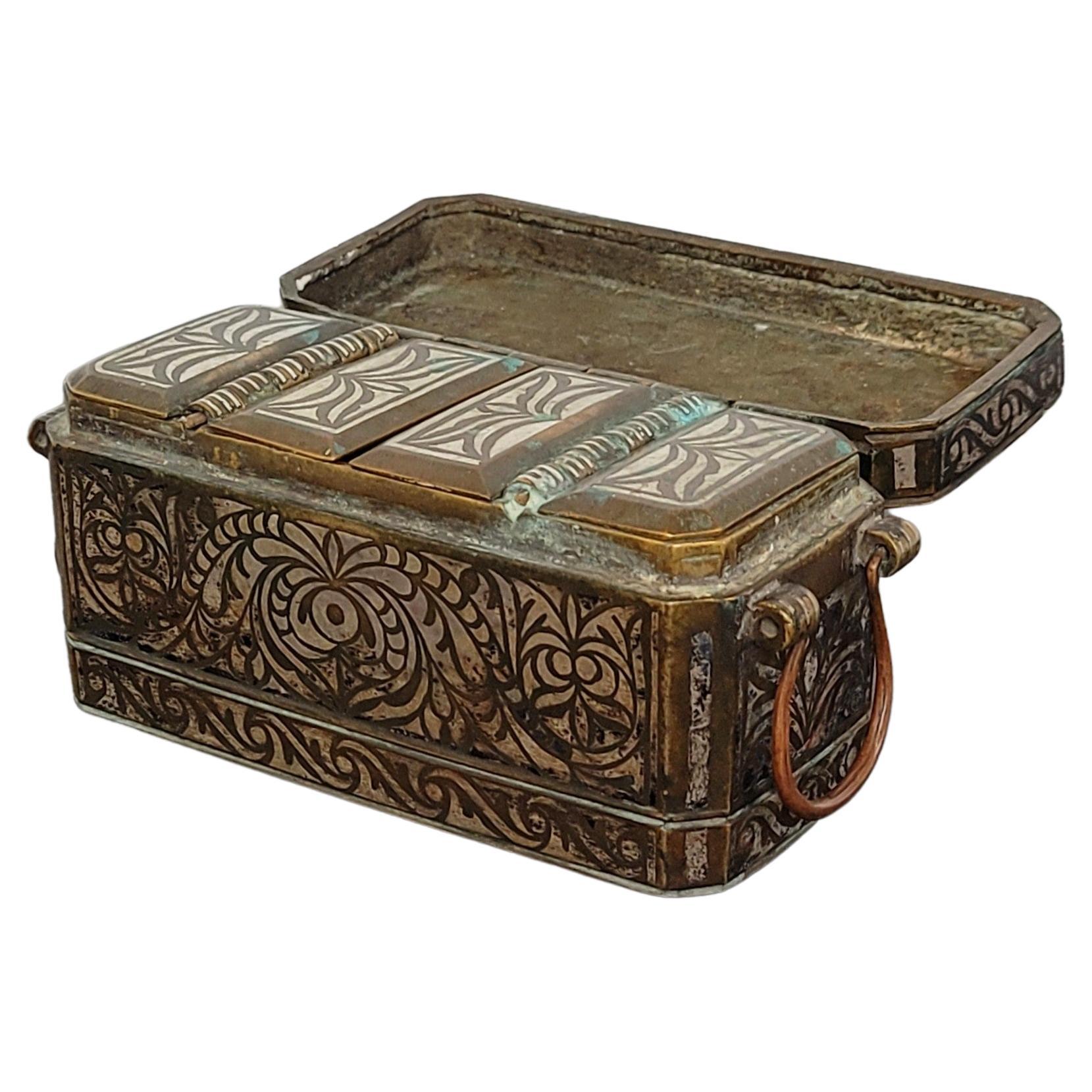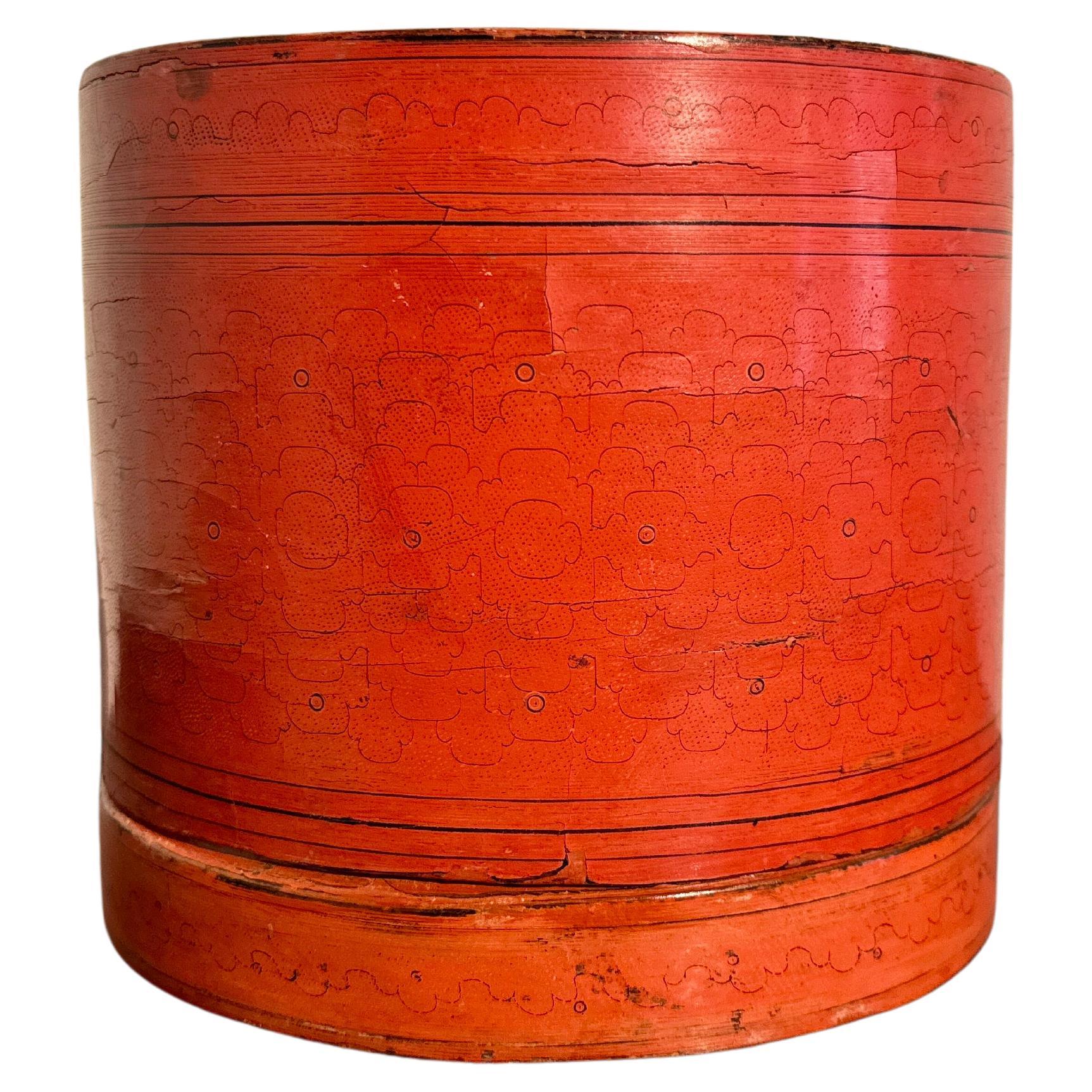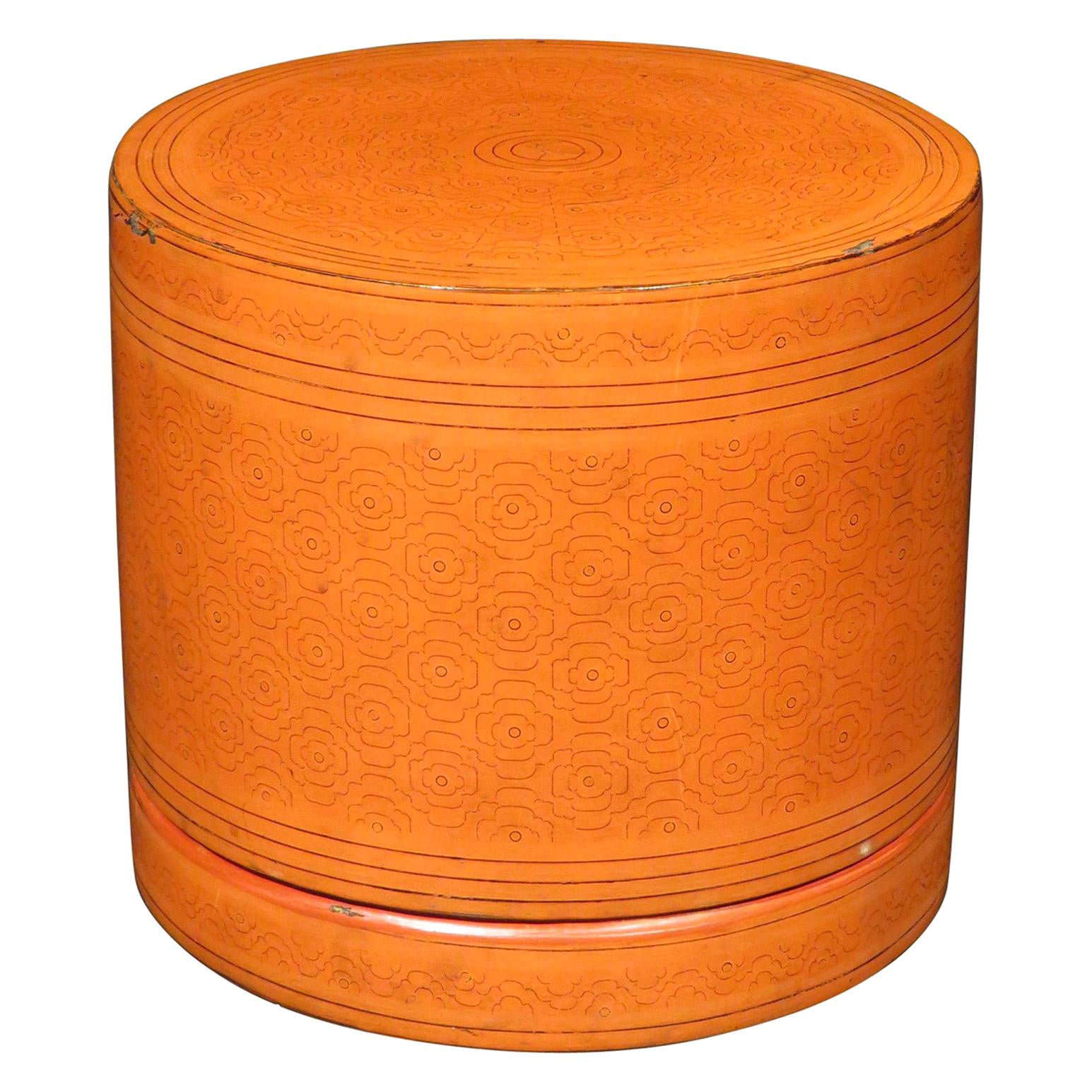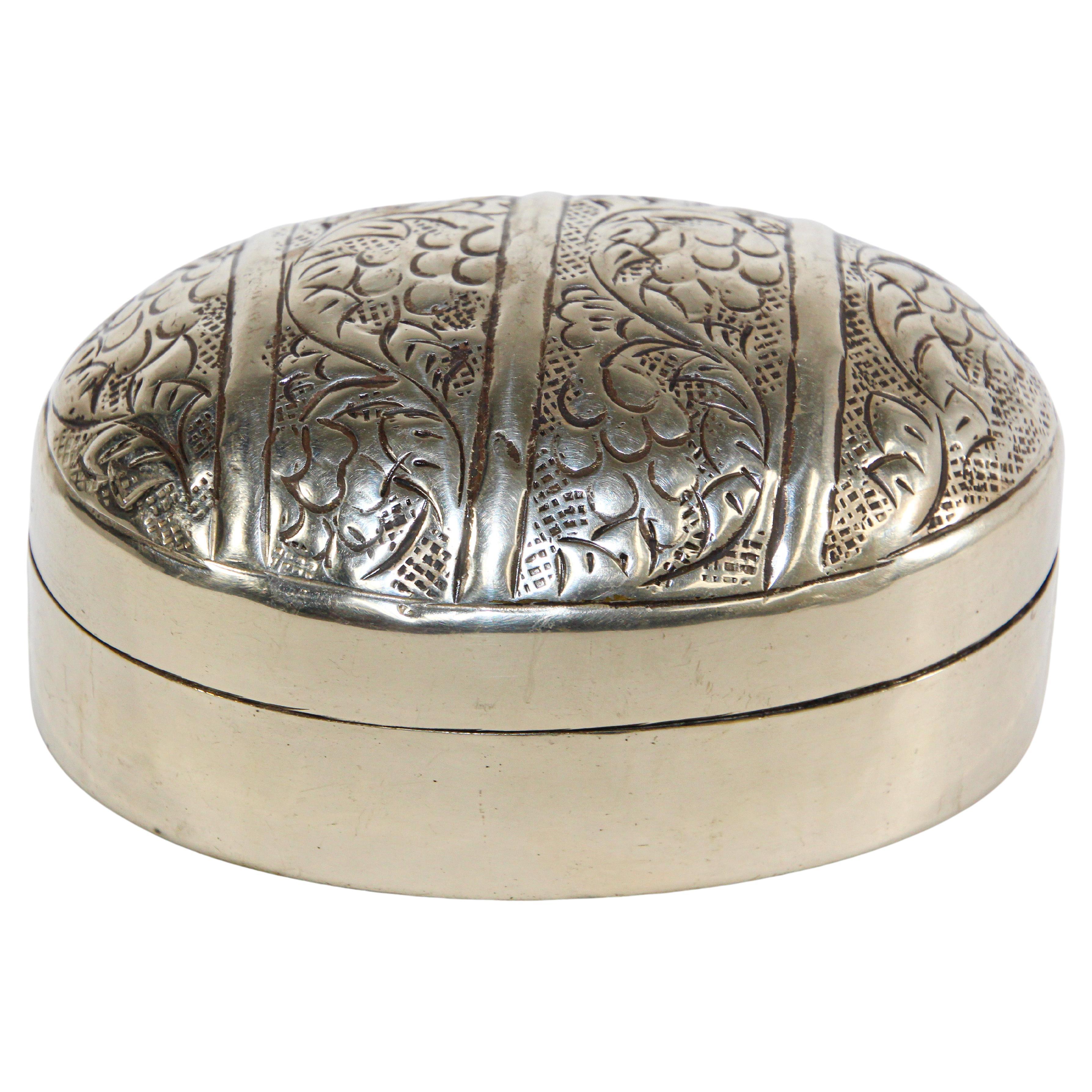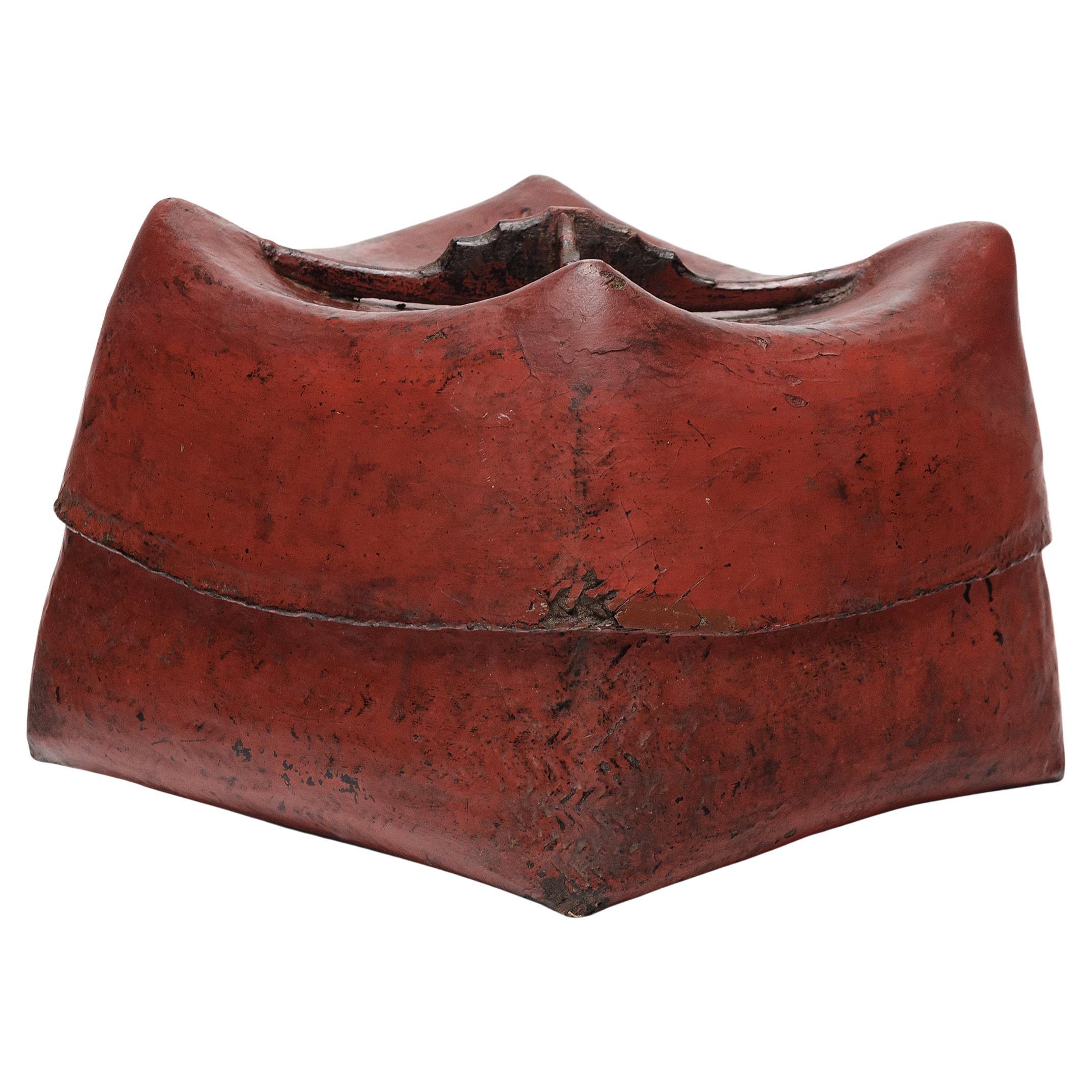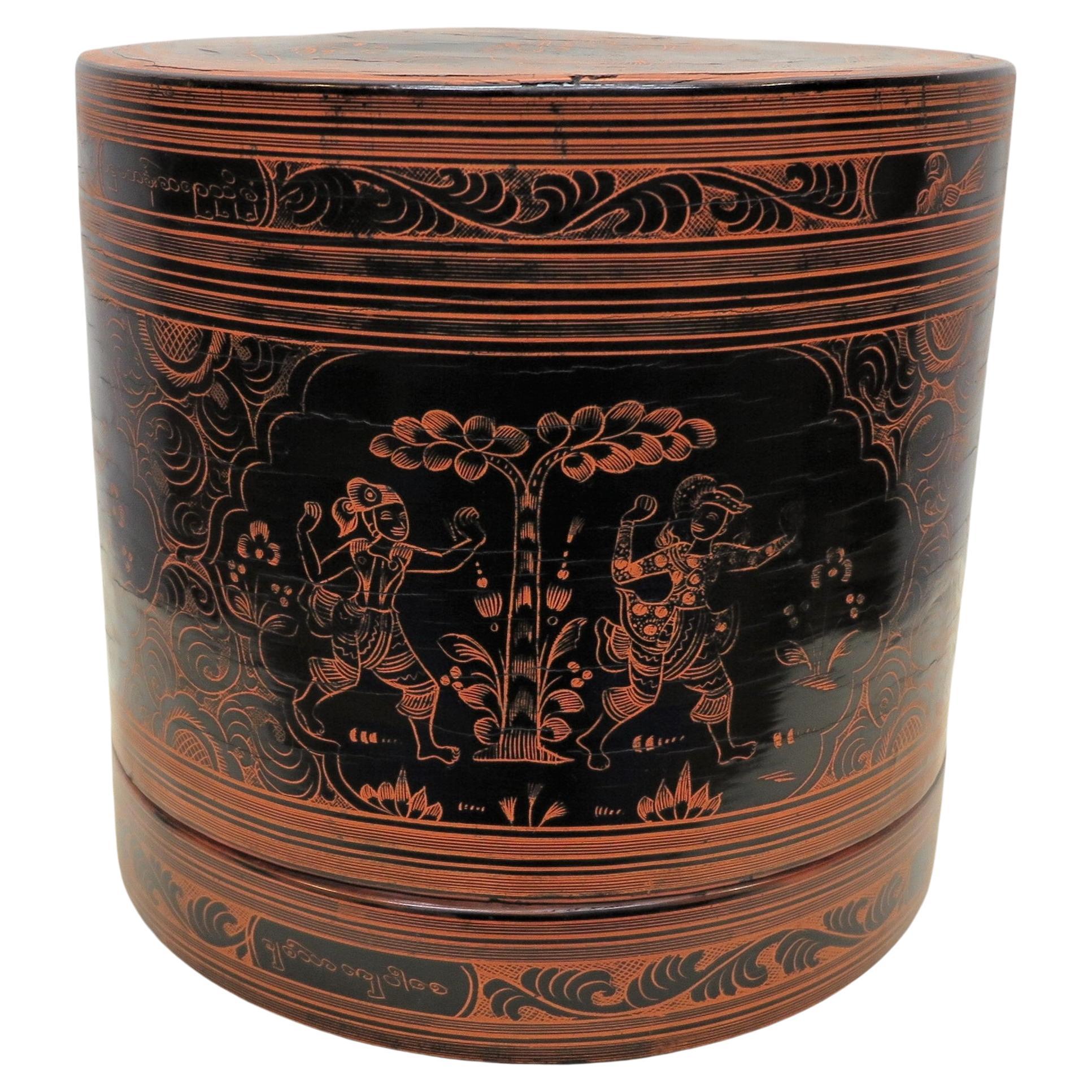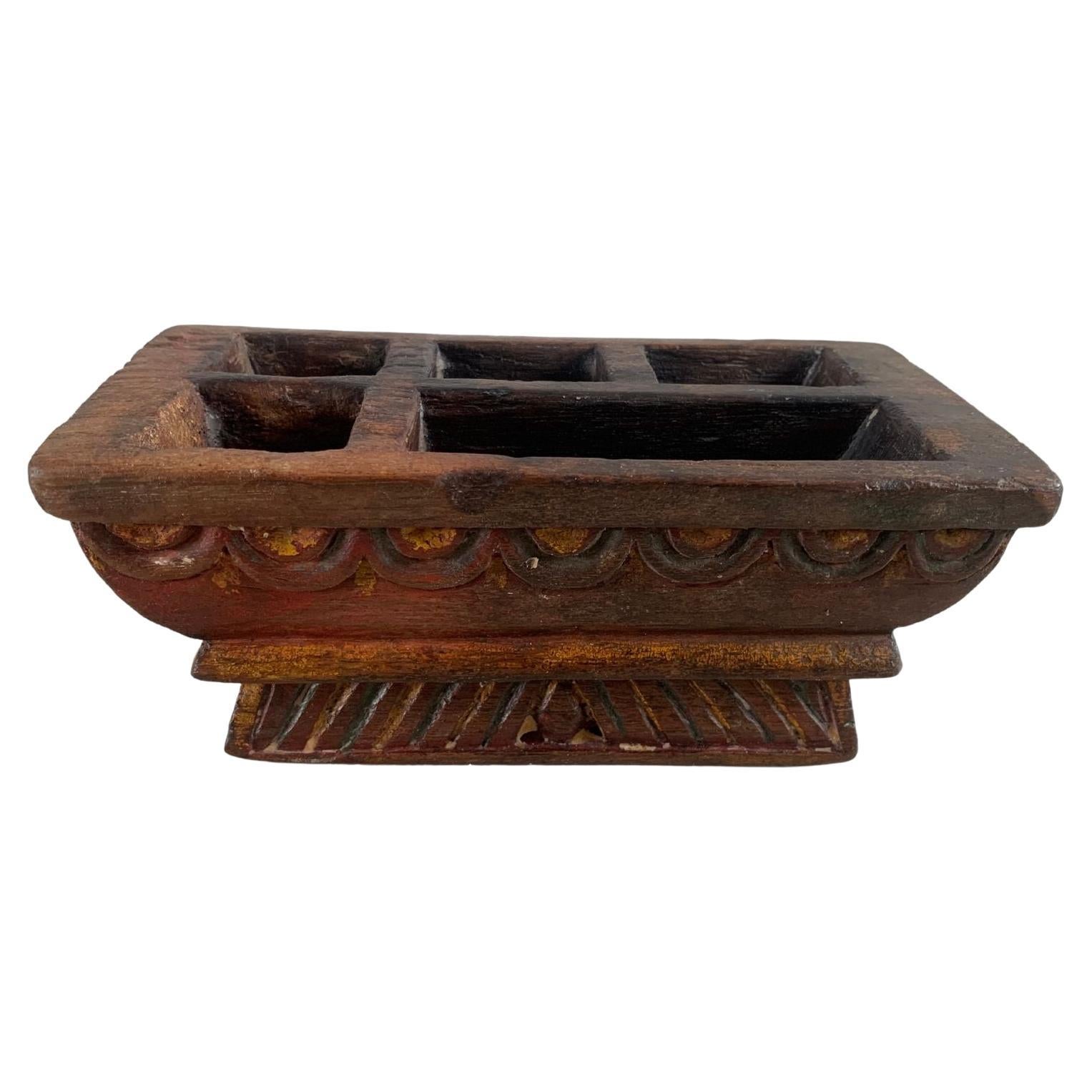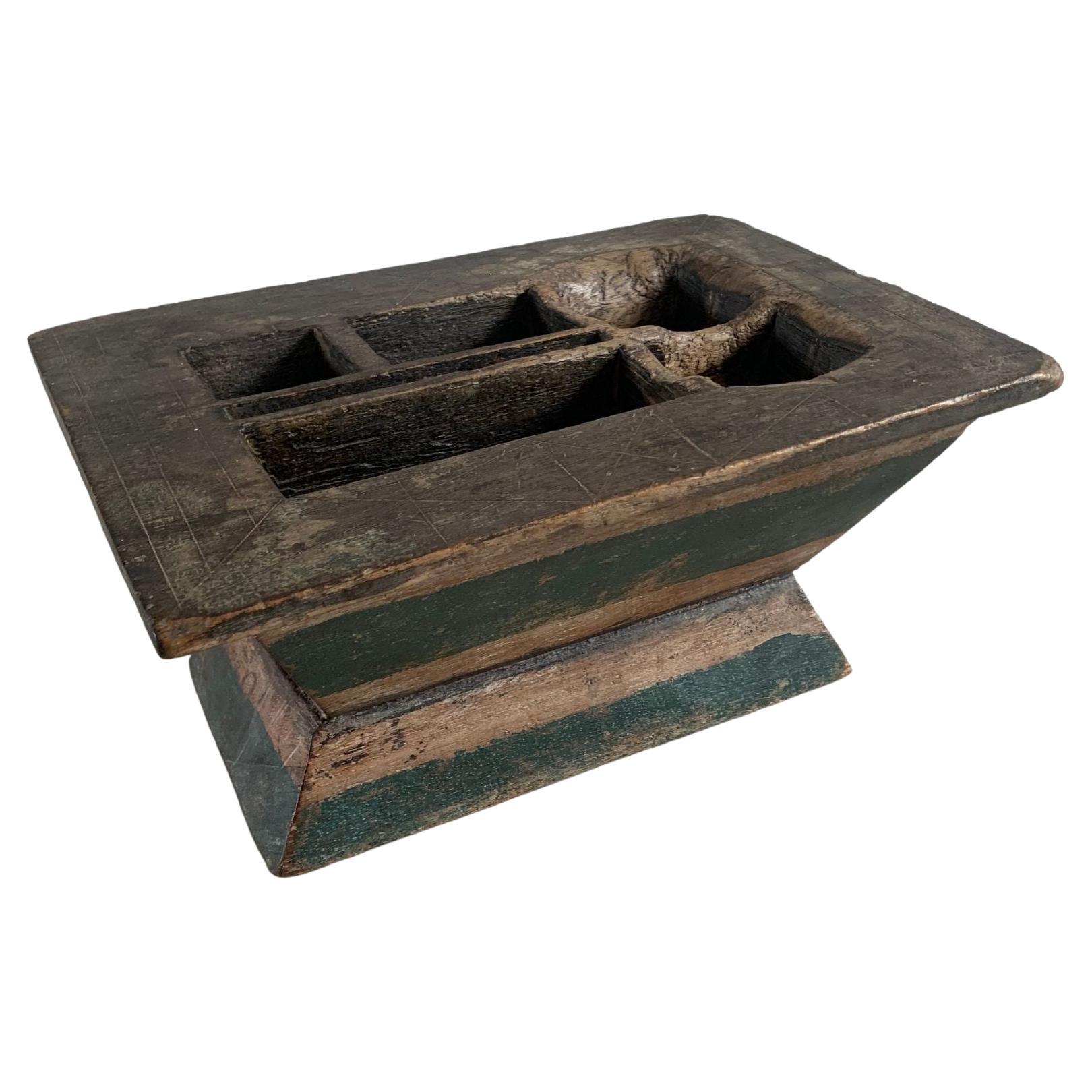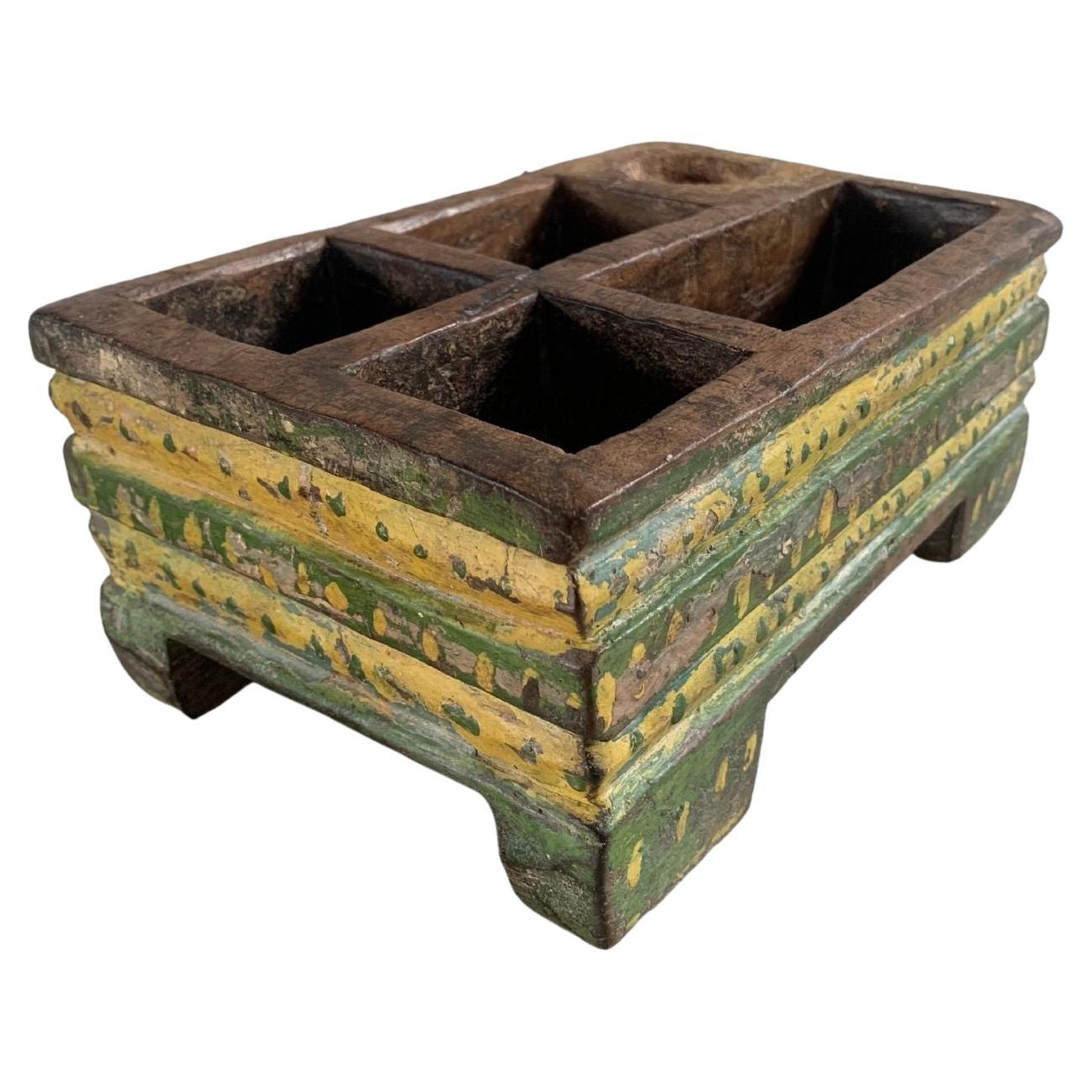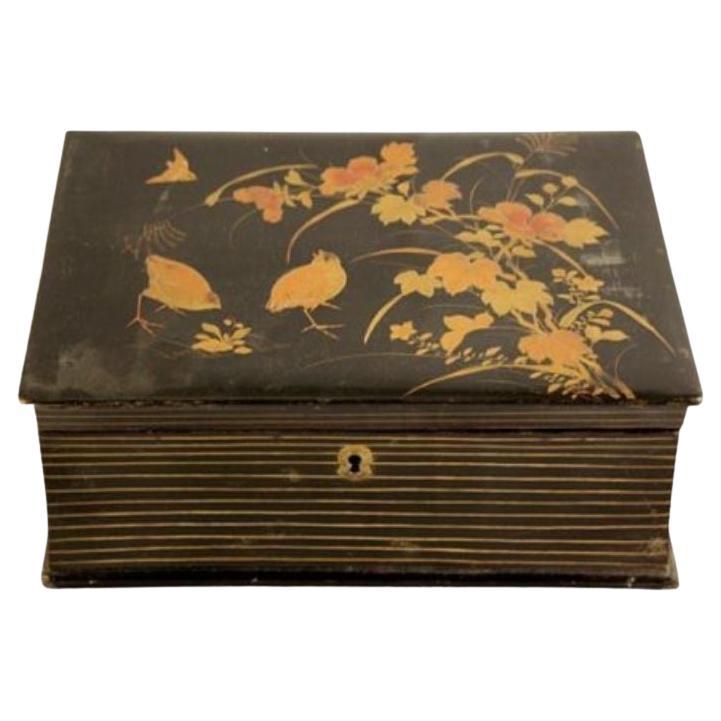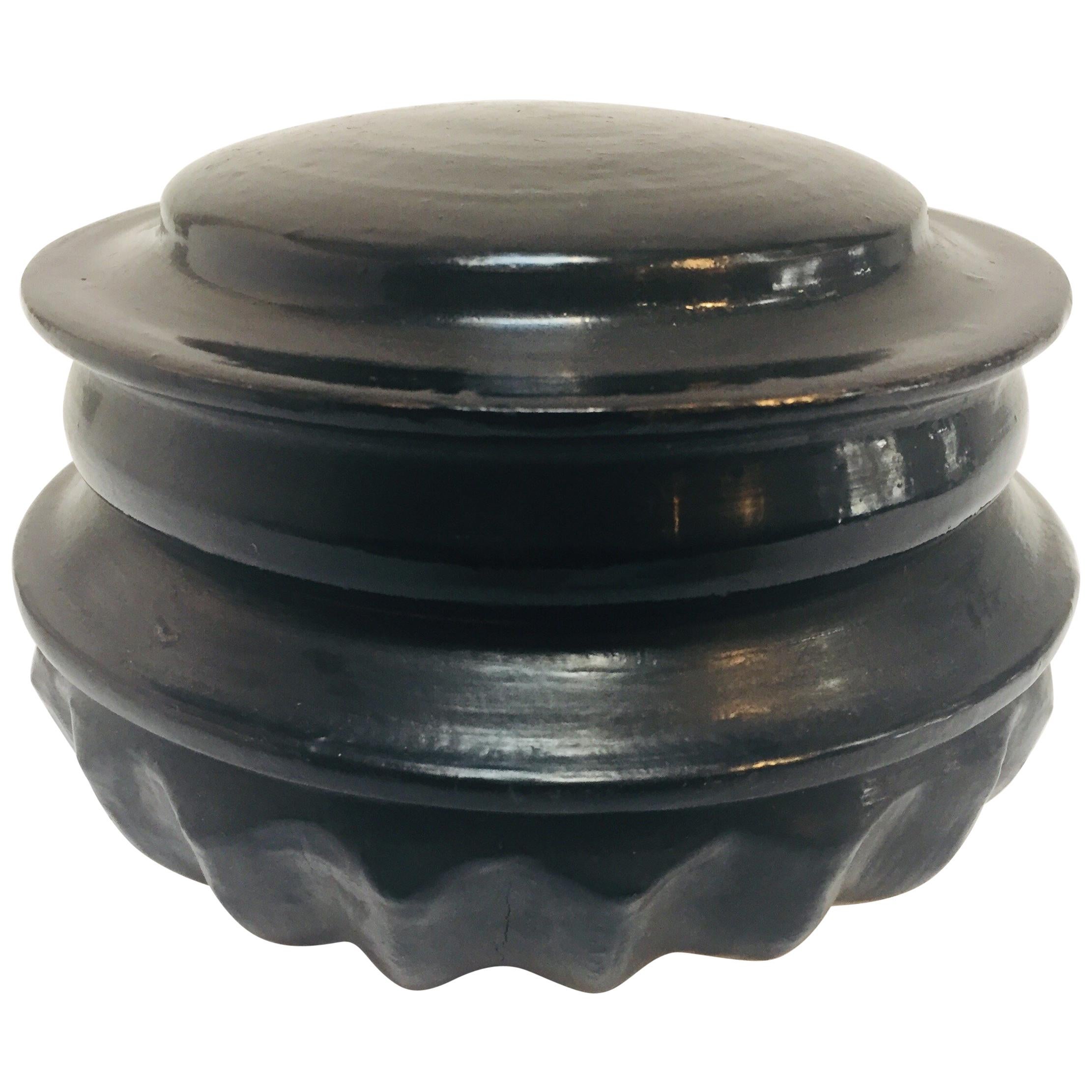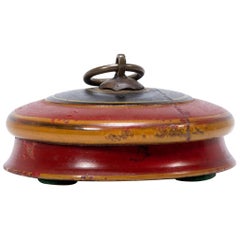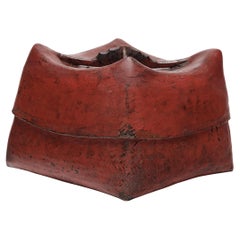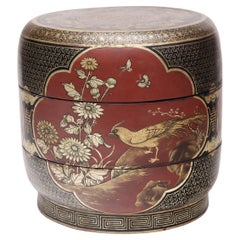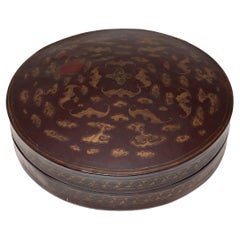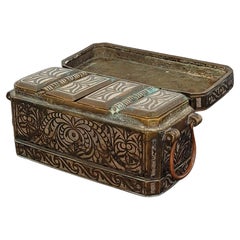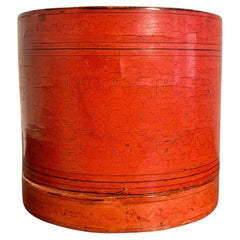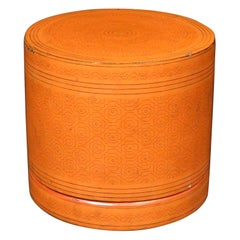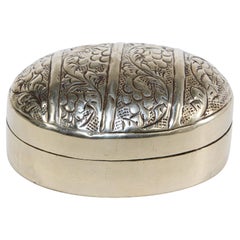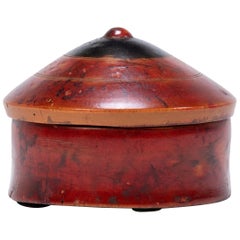
Southeast Asian Red Lacquer Betel Box, c. 1900
View Similar Items
Want more images or videos?
Request additional images or videos from the seller
1 of 6
Southeast Asian Red Lacquer Betel Box, c. 1900
$288List Price
About the Item
- Dimensions:Height: 3 in (7.62 cm)Diameter: 4 in (10.16 cm)
- Materials and Techniques:Wood,Lacquered
- Place of Origin:
- Period:
- Date of Manufacture:circa 1900
- Condition:Wear consistent with age and use.
- Seller Location:Chicago, IL
- Reference Number:Seller: CBH053B1stDibs: LU820022516792
About the Seller
5.0
Platinum Seller
Premium sellers with a 4.7+ rating and 24-hour response times
Established in 1997
1stDibs seller since 2006
1,707 sales on 1stDibs
Typical response time: 1 hour
Authenticity Guarantee
In the unlikely event there’s an issue with an item’s authenticity, contact us within 1 year for a full refund. DetailsMoney-Back Guarantee
If your item is not as described, is damaged in transit, or does not arrive, contact us within 7 days for a full refund. Details24-Hour Cancellation
You have a 24-hour grace period in which to reconsider your purchase, with no questions asked.Vetted Professional Sellers
Our world-class sellers must adhere to strict standards for service and quality, maintaining the integrity of our listings.Price-Match Guarantee
If you find that a seller listed the same item for a lower price elsewhere, we’ll match it.Trusted Global Delivery
Our best-in-class carrier network provides specialized shipping options worldwide, including custom delivery.More From This Seller
View AllRed Lacquer Betel Box, c. 1900
Located in Chicago, IL
In many southeast Asian cultures, offering guests a betel quid to chew was the fundamental symbol of hospitality. A blend of leaves, nuts, seasonings, and sometimes tobacco, betel was kept in finely worked and decorated boxes. This round betel box...
Category
Early 20th Century Southeast Asian Decorative Boxes
Materials
Wood
Burmese Cinnabar Red Lacquer Box, c. 1900
Located in Chicago, IL
Dated to the early 20th-century, this small woven box is a timeless example of Burmese lacquerware. Made of woven bamboo strips, the box is coated in a putty-like substance known as ...
Category
Early 20th Century Burmese Rustic Decorative Boxes
Materials
Bamboo
Chinese Gilt Lacquer Stacking Box, c. 1900
Located in Chicago, IL
This finely painted box was once presented as a gift, filled with popular snacks like roasted melon seeds, dried fruit, and cinnamon-toasted soy beans. Used like a modern lunchbox, e...
Category
Antique Late 19th Century Chinese Qing More Asian Art, Objects and Furni...
Materials
Bamboo
Chinese Gilt Lacquer Hat Box, c. 1900
Located in Chicago, IL
No self-respecting man in Qing-dynasty China would leave the house without some kind of hat. In fact, headgear was so central to social status that even the containers used to store ...
Category
Antique Late 19th Century Chinese Qing Decorative Boxes
Materials
Hide, Fabric, Wood
Chinese Red Lacquer Hide Box, c. 1880
Located in Chicago, IL
This small treasure box from the late 19th century exemplifies the lavish splendor of the Qing-dynasty (1644-1911) decorative arts, finished with intricate surface embellishment and ...
Category
Antique Late 19th Century Chinese Qing More Asian Art, Objects and Furni...
Materials
Brass
Chinese Lacquered Happiness Box with Birds & Blossoms, c. 1900
Located in Chicago, IL
This finely lacquered box was once presented as a gift, filled with popular snacks like roasted melon seeds, dried fruit, and cinnamon-toasted soy beans. Dated to the late 19th centu...
Category
Antique Late 19th Century Chinese Qing Decorative Boxes
Materials
Bone, Mother-of-Pearl, Wood, Lacquer
You May Also Like
Antique Southeast Asian Filipino Maranao Silver Inlaid Brass Betel Nut Box
Located in Forney, TX
A scarce fine quality antique silver-inlaid solid brass betel nut box (Lutuan), dating to the second half of the 19th / early 20th century, hand-crafted in Mindanao, Philippines.
Boxes such as this were used to store the areca nut (also known as the betel nut) which would be wrapped in a betel leaf with lime paste and other ingredients, often tobacco, for chewing. Similar to the European tea caddy, these boxes often served as a way to impress while showing off ones wealth.
Betel chewing was prevalent in the southern Philippines as in much of the rest of Southeast Asia. Wealthier Maranao families on Mindanao were able to afford elaborate silver-inlaid brass betel boxes such as this example. Such boxes were used to show off to guests and from which they were offered betel and the other component such as leaves and lime to make up the betel quid.
Rare large size, most extant examples of such boxes tend to measure around 5 inches in length. At slightly more than 7.75 inches the example here is larger than most.
The distinctive decorative box features a very heavy strong-box like rectangular shaped chest form with canted corners, copper handles, and a conforming hinged lid, lifting open to reveal an interior divided into three compartments covered by four hinged lids. Each of these doors is inlaid with silver in stylized orchid flower patterns.
Exceptionally executed throughout, the arabesque silver inlaid exterior is decorated to the top with a large orchid motif within scrolling obid-obid (stylized rope) borders. The front, back and sides are inlaid with sets of stylized tail feathers of the sari-manok bird beneath which are unusual, highly stylized whimsical zoomorphic faces that appear like cat or tiger faces. (Such stylisation is accounted for by Southeast Asian Islamic preferences to avoid the overt and this potentially idolatrous representation of animal and human forms. Designs such as these are drawn from a local design repertoire that has its origins in wood carving.
Although the spread of Islam in the Philippines began in the 14th century, mostly through the influence of Muslim merchants from the western Malay Archipelago, decorative arts in this design remain exceptionally rare. This lutuan represents a fine example of Islamic metalwork from the most eastern outreach of Islamic art and civilisation: Mindanao island being significantly further east than even China – artwork from Islamic Southeast Asia remains chronically under-represented in the world’s major collections of Islamic art.
PROVENANCE / ACQUISITION
Acquired from highly reputable auction house, Austin Auction Gallery, established 1983, Austin, Texas.
References
Brownrigg, H., Betel Cutters...
Category
Antique 19th Century Philippine Islamic Decorative Boxes
Materials
Silver, Brass, Bronze, Copper
Antique Burmese Orange Lacquer Round Betel Box, c. 1900, Burma
Located in Austin, TX
An attractive antique Burmese cylindrical orange and black lacquered bamboo betel box, kun-it, with interior tray, early 20th century, circa 1910, Burma (Myanmar).
The visually str...
Category
Vintage 1910s Burmese Decorative Boxes
Materials
Lacquer, Bamboo
Highly Decorative Antique Burmese Lacquered Betel Box / Kun-It, Circa 1900
Located in Ottawa, Ontario
The vermillion lacquered cylindrical body decorated overall with repeating bands of curvilinear geometric motifs, the cover lifting to reveal both of its original trays intended to h...
Category
Early 20th Century Burmese Lacquer
Materials
Lacquer, Bamboo
Asian Handcrafted Oval Betel Box in Metal Silvered
Located in Moreno Valley, CA
Asian decorative trinket lidded box in metal silvered hammered and etched with organic floral design.
Anglo Raj style oval form betel box.
Dimensio...
Category
Mid-20th Century Indian Anglo Raj Metalwork
Materials
Metal
Burmese Lacquerware Betel Box
Located in New York, NY
Burmese antique lacquerware betel box. Individual Betel Box authentic Burmese Folk Art know as Kun- It, Mandalay Period. A lacquered cylindrical body of woven turned Bamboo decorated by incised lacquer overall with Chu-pan variant motif and traditional Folk Art characters. This Betel Box has four bowls that make up the entire box. This is a complete Burmese Lacquerware Betel Box.
Each bowl has a purpose. The top and base work as large containers and two shallow dishes work as small bowls. The workmanship is very unique having exquisite height details to the bottom of the base container and the two shallow bowls showcasing a complex design to the weaving. Antique Burmese Lacquerware is highly collectible, having books written on this Folk Art with museums having collections and exhibits of same. A very nice antique Burmese Betel Box...
Category
Early 20th Century Burmese Other Decorative Boxes
Materials
Lacquer
Betel Nut Box from Java with Polychromed Finish, Indonesia, c. 1900
Located in Jimbaran, Bali
Betel Nut is consumed on a daily basis in a large portion of the Indonesian Archipelago. In Java, betel nut was offered as a sign of respect and hospitality when people would visit o...
Category
Early 20th Century Indonesian Tribal Decorative Boxes
Materials
Hardwood
$260 Sale Price
20% Off
Free Shipping
Recently Viewed
View AllMore Ways To Browse
Antique Round Box
Painted Box Red
Red Etched
Lacquer Jewelry Box
Antique Round Wood Box
Red Lacquer Jewelry
Red Lacquer Jewelry Box
Betel Box
Antique Betel Box
Lacquer Betel Box
Crystal With Lid
Antique Tortoiseshell
Lion Box
Victorian Plaque
Wood Turned Box
Wooden Box French
Italian Murano Glass Box
Antique Bird Boxes
